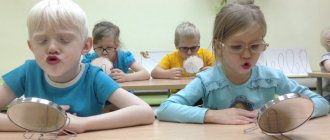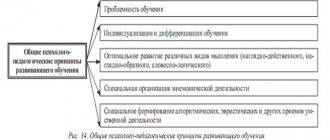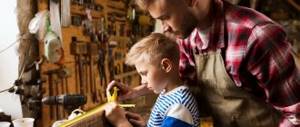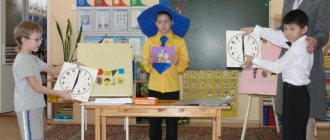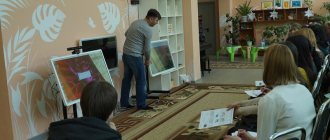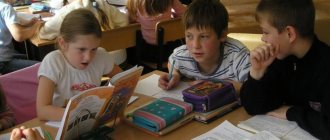The essence of health-saving technologies
Health-saving technologies are one of the types of modern innovative technologies that are aimed at preserving and improving the health of all participants in the educational process in preschool educational institutions. The use of such technologies has a two-way focus:
- formation of the foundations of valeological culture among preschoolers, i.e. teach them to take care of their health independently;
- organization of the educational process in kindergarten without negative impact on children's health.
Health-saving technologies in preschool educational institutions according to the Federal State Educational Standard are perfectly combined with traditional forms and methods in pedagogy, complementing them with various ways of implementing health-improving work. The use of such technologies solves a number of problems:
- laying the foundation for good physical health;
- increasing the level of mental and social health of pupils;
- carrying out preventive health work;
- familiarizing preschoolers with the principles of maintaining a healthy lifestyle;
- motivating children to lead a healthy lifestyle;
- formation of useful habits;
- formation of valeological skills;
- formation of a conscious need for regular physical education;
- fostering a value-based attitude towards one’s health.
To ensure an integrated approach to protecting and improving the health of pupils, required by the Federal State Educational Standard, preschool educational institutions use various types of modern health-saving technologies:
- medical and preventive (conducting medical examinations, monitoring the health of children, anti-epidemiological work, organizing specialized correctional groups, preventing many diseases, sanitary and hygienic work, quality control of catering, etc.);
- physical education and health (conducting outdoor games, sports events, valeology classes, hardening procedures, organizing walks, etc.)
- valeological education of parents (motivating parents to lead a healthy lifestyle, teaching parents how to interact with children to form a valeological culture in them);
- valeological education of teachers (familiarization of educators with innovative health-saving technologies and methods of their implementation, motivation for a healthy lifestyle, expanding knowledge about the age and psychological characteristics of preschoolers);
- health-saving education for children (formation of valeological knowledge and skills).
Only by implementing all of these types of health-saving technologies can we achieve close interaction between the main factors influencing the health of preschool children.
The use of health-saving technologies in kindergarten according to the Federal State Educational Standard
1. Preventive and health-improving technologies.
Methodology V.F. Bazarny
Practical methods for solving health problems in a preschool educational organization include technologies proposed by Doctor of Medical Sciences Vladimir Filippovich Bazarny, who in his research convincingly proved that the existing system of education and development of children ignores the nature of the child, which leads to the fading of his vitality and activity. His original method of maintaining health involves the following innovations:
- Incorporation of rhythmic alternation of dynamic and static poses into the work. To solve the above problem, special height-measuring tables and desks with an inclined surface with an inclination angle of up to sixteen degrees are used, thus, the child has the opportunity to change his body position, standing at the desk or periodically sitting at the table, maintaining comfortable conditions for modeling or drawing. The child himself determines the time period that he will spend at the table or at the desk; usually, children of middle and senior preschool age can stand at the desk for no more than five minutes, this time period gradually increases. This unusual approach, which changes the traditionally static sitting postures of children during classes to a free motor mode, makes it possible to strengthen the muscular frame of the back, improve children’s posture, activate the nervous system, and harmonize the cardiovascular system.
- The practice of “expanding the zone of visual perception.” Work with visualization is organized using a methodical cross pendant, on which sensory-didactic material is placed in a suspended position at a level that allows the child to reach it on tiptoe and remove the necessary card. This methodological invention is an effective prevention of myopia, since in order to complete a learning task, children must make numerous searching movements with their eyes.
- In order to expand the space of children’s visual activity, improve creative thinking and imagination, and form a holistic picture of the world, the “Ecological Journey” wall panel, consisting of images of natural objects located according to the laws of perspective, is used in classes.
- During physical education breaks, a simulator is used, consisting of images of multi-colored trajectories that children visually draw, combining head movements and eye movements. Children enthusiastically look with their eyes at the painted “guests” of their group, who are placed on the ceiling or walls of the group room in the form of bright images of the sun, clouds, flowers, rainbows or fairy-tale characters.
- The use of massage mats on which children walk or stand during activities in socks.
- Separate education for boys and girls, this approach is based on the belief that boys and girls have different ways of perceiving information and perceiving the world. In the conditions of mixed groups of ordinary kindergartens, play areas can be divided, accordingly, toys are selected for girls that develop the feminine nature, and for boys - the masculine nature.
Video: kindergarten according to the system of Dr. V. F. Bazarny
Technological techniques
Different age groups have their own focus and duration of physical education classes:
- It is important to teach younger preschoolers basic safety techniques and proper insurance in case of a fall, develop spatial orientation skills, and instill a taste for regular physical education. Morning exercises last 4–5 minutes, all exercises are shown by the teacher. Physical education classes are held twice a week for 20 minutes.
- For middle group students, exercises that develop physical strength and endurance will be relevant. The duration of morning exercises is increased to 7 minutes, physical education - three times a week for 20-25 minutes.
- Older preschoolers need to be targeted at improving their motor abilities and encouraged to demonstrate independence. The morning health complex lasts from 10 to 15 minutes in the preparatory group, the duration of physical education classes is 30 minutes three times a week.
Gymnastics in bed can include elements such as stretching, alternate and simultaneous raising and lowering of arms and legs, elements of self-massage, finger gymnastics, eye gymnastics, etc.
- Dynamic breaks - held for ten minutes during classes as children get tired. You can combine gymnastic exercises for the eyes, breathing, and fine motor skills, depending on the demand for these particular exercises. The purpose of such exercises is to reduce mental and emotional stress and prevent fatigue.
- Finger gymnastics - recommended in individual or group form every day, especially necessary for children with speech problems.
- Breathing exercises (the method of A. N. Strelnikova has proven itself to be excellent) is a system of rhythmic exercises consisting of alternately changing the phases of inhalation through the nose and exhalation through the mouth, with a mandatory pause after exhalation, used as part of various forms of health procedures for all children. This kind of gymnastics is very important because it helps strengthen the respiratory muscles of the chest and forms proper breathing. A necessary requirement is a well-ventilated room; it is advisable to monitor the hygienic procedure for cleaning the nasal cavity before starting the exercise.
- Gymnastics for the eyes - used for all children to prevent visual fatigue, relax the eye muscles, practiced daily in classes for 3-5 minutes. It is advisable to include illustrations in your work. Gymnastics for the eyes E.S. Avetisova consists of a set of exercises to prevent myopia and strengthen the eye muscles.
Video: Strelnikova’s breathing exercises at a preschool educational institution
https://youtube.com/watch?v=rgyNQSOL-7s
Gymnastics complex for the eyes (repeat each exercise three times):
- Alternately close and open your eyes every 3-5 seconds.
- Blink rapidly for 10–15 seconds, then stop for 7–10.
- Massage the closed eye with circular movements of the index finger.
- Calm smooth horizontal eye movements from right to left and vice versa, vertical eye movements up and down.
- You need to imagine a rotating wheel, “catch” a point with your gaze and follow its movement.
- Concentrate your gaze on the tip of your nose, fixate it and hold it until you feel tired, then relax.
- Look at the index finger of your outstretched right hand for up to five seconds, close your left eye and, bending and unbending your right hand, i.e. changing the distance, continue to focus your gaze on the index finger of your right hand. Switch hands and repeat up to eight times.
- "Dot on the glass." At eye level, place a point with a diameter of up to five millimeters, then concentrate your gaze for two seconds on the object behind the glass located behind the mark, then move your gaze to the point, then back to the object. We practice this exercise for seven minutes.
Video: exercises on the mat in kindergarten
For posture:
- We take an even posture and walk with our arms raised high.
- Easy running on your toes.
- Walking on your toes, combined with raising your arms to the sides, moving your shoulder blades.
Prevention of flat feet:
- Shallow squats on the outer arches of the feet.
- Stand on your toes, bending your knees, from a heels outward, toes inward position.
- Raise your leg from a standing position with your foot turned outward, then inward.
Video: outdoor games for kids
https://youtube.com/watch?v=sfMxSaEmDds
Self-massage, acupressure:
- Perform superficial circular stroking from the wrist to the shoulder joint and down.
- Lightly tap the thigh with your fists for twenty to thirty seconds.
- Acupressure massage of the face and head, closing the eyes, we run the surface of the palm over the face from the forehead to the temples, from the nose to the cheekbones, grab the hair with our hands and gently, smoothly pull, gradually passing the entire surface of the head.
By taking part in outdoor games, children satisfy their need for movement, communication with each other, and develop useful skills.
- Game gymnastics - several imitative tasks to imitate the movements of animals, athletes, create the image of a plant (“swimmer”, “rose”, “panther”, etc.).
- Stretching is a set of stretching and flexibility exercises accompanied by music that creates a good mood; the duration of classes for younger preschoolers is no more than 15 minutes. It is advisable to do it in the morning or after a nap, especially with children who have problematic posture and a tendency to flat feet. It is carried out in a spacious, well-ventilated room, for example, a hall for music or physical exercises.
- Sports games of different levels of mobility - used daily as part of a group lesson, on a walk or in the gym. Games are selected depending on the age of the children, develop dexterity, coordination, have a beneficial effect on the emotional state, stimulate activity, and promote vigor of body and spirit.
- Relaxation - for all pupils, depending on the children’s need for emotional relaxation and peace. Any room with an atmosphere of comfort and peace is suitable for holding it; it is recommended to use classical music (Mozart, Chopin), sounds of the natural environment.
- Orthopedic gymnastics - is intended for children with problems with flat feet, as well as pathology of the supporting arch of the foot, and is used as an additional component of various exercises in the physical education and health complex.
Video: awakening gymnastics
2. A training group of technologies that solves the problem of developing a correct understanding of a healthy lifestyle and consolidating theoretical knowledge as a conscious experience:
- game trainings;
- conversations and meetings with interesting people.
Educators pay special attention to developing children’s safe behavior skills at home, in nature, and on the street.
3. Correctional group of activities conducted by a psychologist and teacher:
- fairy tale therapy, art therapy, aromatherapy, color therapy;
- psychogymnastics, a set of rhythmic speech therapy exercises.
Card index of health-saving technologies
There are many effective varieties of modern health-saving technologies that should be in the kindergarten teacher’s file cabinet.
Physical education minutes
One of the simplest and most common types of health-saving technologies in preschool educational institutions is physical education minutes. They are also called dynamic pauses. These are short-term breaks in intellectual or practical activity, during which children perform simple physical exercises.
The purpose of such physical education minutes is to:
- changing the type of activity;
- preventing fatigue;
- relieving muscle, nervous and brain tension;
- activation of blood circulation;
- activation of thinking;
- increasing children's interest in the course of the lesson;
- creating a positive emotional background.
Carrying out dynamic pauses has some peculiarities. They are designed to be performed in limited space (near a desk or table, in the center of the room, etc.). Most physical education sessions are accompanied by a poetic text or performed to music.
Such dynamic pauses last 1-2 minutes. All children are involved in physical education activities. This does not require sportswear or equipment. The time for the exercise is chosen arbitrarily depending on the degree of fatigue of the children. A physical education session may include individual elements of other health-saving technologies.
Breathing exercises
A study of the work experience of many preschool teachers shows that breathing exercises are among the most popular types of health-saving technologies in preschool educational institutions. It is a system of breathing exercises that are part of a complex of correctional work to strengthen the general health of the child.
Using breathing exercises helps:
- improve the functioning of internal organs;
- activate cerebral circulation, increase oxygen saturation of the body;
- train the breathing apparatus;
- prevent respiratory diseases;
- increase the body's defense mechanisms;
- restore peace of mind, calm down;
- develop speech breathing.
During breathing exercises, the following rules must be observed. It is recommended to carry it out in a well-ventilated room and before eating. Such exercises should be daily and last 3-6 minutes. To perform breathing exercises, you do not need any special clothing, but you need to make sure that it does not restrict the child’s movements.
During the exercises, you need to pay special attention to the nature of your inhalations and exhalations. Children should be taught to inhale through the nose (inhalations should be short and light) and exhale through the mouth (exhalation should be long). Breathing exercises also include breath-holding exercises. It is important that children do not tense their body muscles or move their shoulders when performing exercises to develop speech breathing.
Finger gymnastics
Finger gymnastics is a type of health-saving technology that is used not only to develop fine motor skills of the hands (which is important for preparing a child for drawing, modeling and writing), but also to solve problems with speech development in children. In addition, such gymnastics promotes the development of:
- tactile sensations;
- coordination of movements of fingers and hands;
- creative abilities of preschool children.
Finger gymnastics is carried out in the form of staging poetic texts using the fingers. This is almost the first type of gymnastics that can be performed with children. During finger gymnastics, children make active and passive movements with their fingers. The following types of exercises are used:
- massage;
- actions with objects or materials;
- finger games.
It is recommended to do finger exercises daily. During its implementation, you need to ensure that the load on both hands is the same. In addition, it is necessary to remember that each session of finger gymnastics should end with relaxation exercises. Such classes can be carried out collectively, in groups or individually with each child.
Gymnastics for the eyes
Also, health-saving technologies in preschool educational institutions include eye gymnastics. It involves conducting a system of exercises aimed at correcting and preventing visual impairment. Eye exercises are necessary for:
- relieve tension;
- fatigue prevention;
- eye muscle training;
- strengthening the ocular apparatus.
To perform such gymnastics, 2-4 minutes are enough. The main rule of this gymnastics is that only the eyes should move, and the head remains motionless (except for cases where head tilts are provided). All exercises must be done standing.
Usually the teacher shows a sample of each action, and the children repeat after him. Often such gymnastics has poetic accompaniment. It may include exercises with objects, special tables or ICT.
Psycho-gymnastics
Psycho-gymnastics refers to innovative health-saving technologies that are used in kindergarten to develop the emotional sphere of the child and strengthen his mental health. The purpose of psychogymnastics is the following:
- conducting psychophysical relaxation;
- development of cognitive mental processes;
- normalization of the condition in children with neuroses or neuropsychic disorders;
- correction of deviations in behavior or character.
Psychogysnastics is a course of 20 special classes, which are conducted in a playful way. They are organized twice a week and last from 25 to 90 minutes. Each lesson consists of four stages that involve acting out:
- sketches using facial expressions and pantomime;
- sketches to depict emotions or character traits;
- sketches with a psychotherapeutic orientation.
The session ends with psychomuscular training. During the lesson, there is a “minute of mischief”, when children can perform any actions they want.
Rhythmoplasty
Rhythmoplasty is an innovative method of working with children, which is based on them performing special plastic movements that have a healing nature to the music. The purpose of rhythmoplasty:
- replenishment of “motor deficit”;
- development of the motor sphere of children;
- strengthening the muscle corset;
- improvement of cognitive processes;
- formation of aesthetic concepts.
Rhythmoplasty is organized in the form of special music classes. Physical exercises should be performed at a slow pace with a wide amplitude. These classes should be done twice a week for 30 minutes each. It is recommended to do rhythmoplasty no earlier than half an hour after eating.
Play therapy
The Federal State Educational Standard states that the leading activity for preschoolers is play. Therefore, play therapy should be a mandatory type of health-saving technologies in preschool educational institutions. This technology involves involving children in participating in a variety of games, during which they will have the opportunity to:
- show emotions, experiences, imagination;
- express yourself;
- relieve psycho-emotional stress;
- get rid of fears;
- become more confident in yourself.
Play therapy is considered an excellent tool for combating childhood neuroses.
“Rhythmoplasty as a technology for preserving and stimulating the health of preschool children”
Educational:
1. Development of the ability to perceive music, i.e. feel its mood and character, understand its content; development of musical ear, sense of rhythm; musical outlook and musical memory.
2. Development of creative abilities, the need for self-expression in movement through music: creative imagination and fantasy; ability to improvise.
3. Development of the emotional sphere and the ability to express emotions in facial expressions and pantomime.
4. Development of perception, attention, memory, thinking; training the lability of nervous processes.
Educational:
1. Cultivating goodwill, the ability to behave in a group, and obey the rules.
2. Development of empathy.
Wellness:
1. Search for innovative effective means of protecting and strengthening the health of children, improving the development of the motor sphere of preschool children based on the formation of their need for movement, proper organization of prevention and rehabilitation, timely correction of deviations in health.
2. Formation of a conscious desire for health, a culture of health.
3. Formation of correct posture and beautiful gait.
4. Promote the prevention of flat feet.
Rhythmoplasty-
a system of physical exercises aimed at the comprehensive harmonious development of the body.
Classes are conducted in a playful way and are based on rhythmic movement exercises accompanied by music, which has a positive effect on children’s perception of new information. It is these activities that help the child to relax, including psychologically.
The game method gives the educational process an attractive form, facilitates the process of memorizing and mastering exercises, increases the emotional background of classes, and promotes the development of the child’s thinking, imagination and creative abilities.
Rhythmoplasty is available to all children, without exception, it helps not only the physical development of the child, but also gives him consistency of thought and action, develops his ability to concentrate and has a positive effect on physical development. Rhythmoplasty is the first step to playing sports, dancing and music. The child learns to listen, act, and coordinate his movements with the music. Regular rhythmoplasty classes are a good prevention of school-age problems such as sluggish posture and scoliosis and flat feet. And most importantly! Children love this so much!
Rhythmoplasty has no age limit, but is recommended for children from three to seven years old.
In movement, we develop the ability to convey the different character of music, as well as shades (cheerful - sad, playful - calm, joyful, solemn, comic, etc.). We learn to react to changes in tempo and dynamics. Children are offered general developmental exercises for various muscle groups, flexibility and smoothness.
“Health-saving technologies in preschool educational institutions” material on the topic
Municipal budgetary preschool educational institution
"General developmental kindergarten No. 16"
Report
Topic: “Health-saving technologies in preschool educational institutions”
Prepared by: Zhuravleva A.A.
Teacher of MBDOU No. 16
I would like to start my speech with the words of V.A. Sukhomlinsky
“Taking care of health is the most important job of a teacher. Their spiritual life, worldview, mental development, strength of knowledge, and self-confidence depend on the cheerfulness and vigor of children.”
Health is a state of complete physical, mental and social well-being and not merely the absence of disease or infirmity.
Currently, one of the most important and global problems is the health of children. Raising a healthy child is the most important thing that we, preschool teachers, need to do. Full physical development and health of a child is the basis for personality formation. Physical health is inextricably linked to their psychological health and emotional well-being. A preschool educational institution has the potential to develop a health-saving culture and healthy lifestyle skills in children. This is due to the systematic nature of preschool education, the possibility of stage-by-stage implementation of the assigned tasks, taking into account the age and psychological capabilities of preschool children. Health-saving technologies are among the most significant among known technologies in terms of the degree of influence on children's health.
Health-saving technologies in preschool education are technologies aimed at solving the priority task of modern preschool education - the task of preserving, maintaining and enriching the health of the subjects of the pedagogical process in kindergarten: children, teachers and parents. In this regard, the integrated inclusion of health-saving technologies in the educational space of preschool educational institutions becomes relevant. The purpose of such technologies is to unite teachers, doctors, parents and, most importantly, the children themselves to preserve, strengthen and develop health. Health-saving technology is an integral system of educational, health-improving, corrective and preventive measures that are carried out in the process of interaction between a child and a teacher, a child and parents, a child and a medical worker.
The goal of health-saving technologies in preschool education
In relation to a child - ensuring a high level of real health for a kindergarten pupil and nurturing a valid logical culture as the totality of a child’s conscious attitude towards human health and life, knowledge about health and the ability to protect, support and preserve it, a valid logical competence that allows a preschooler to make independent and effective decisions tasks of a healthy lifestyle and safe behavior, tasks related to the provision of basic medical, psychological self-help and assistance.
In relation to adults - promoting the establishment of a culture of health, including a culture of professional health for preschool teachers and value education of parents.
Tasks:
- maintain children's health;
- create conditions for their timely and full mental development;
- provide every child with the opportunity to joyfully and meaningfully live the period of preschool childhood.
Health saving activities in our preschool educational institution are carried out in the following types:
Types of health-saving technologies in preschool education:
- medical and preventive;
- physical education and recreation;
- technologies to ensure the socio-psychological well-being of the child;
- health savings and health enrichment for preschool teachers;
- Vale of logical education of parents; health-saving educational technologies in kindergarten.
Medical and preventive technologies in preschool education are technologies that ensure the preservation and enhancement of children’s health under the guidance of medical personnel of preschool educational institutions in accordance with medical requirements and standards, using medical supplies. These include the following technologies: organizing monitoring of the health of preschool children and developing recommendations for optimizing children's health; organization and control of nutrition for children of early and preschool age, physical development of preschool children, hardening; organization of preventive measures in kindergarten; organization of control and assistance in meeting SanPiN requirements; organization of a health-saving environment in preschool educational institutions.
Physical education and health technologies in preschool education - technologies aimed at physical development and strengthening the health of preschoolers: the development of physical qualities, motor activity and the formation of physical culture of preschoolers, hardening, breathing exercises, massage and self-massage, prevention of flat feet and the formation of correct posture, nurturing the habit of daily physical activity and health care, etc.
The implementation of these technologies, as a rule, is carried out by physical education specialists and preschool teachers in the conditions of specially organized forms of health-improving work. Certain techniques of these technologies are widely used by teachers in various forms of organized pedagogical process: GCD, regime moments, free activity of children.
Technologies for ensuring the socio-psychological well-being of a child are technologies that ensure the mental and social health of a preschool child. The main task of these technologies is to ensure emotional comfort and positive psychological well-being of the child in the process of communicating with peers and adults in kindergarten and family. These include: technologies for psychological or psychological-pedagogical support for the development of a child in the pedagogical process of a preschool educational institution. This type of technology includes technologies for psychological and psychological-pedagogical support for the development of a child in the pedagogical process of a preschool educational institution.
Technologies for the valet logical education of parents - the task of these technologies is to ensure the valet logical education of parents of preschool children.
In order to cooperate with parents in promoting a healthy lifestyle in children, we have developed a system of activities, which include:
- parent meetings, consultations, conferences, conversations,
- competitions, sports events, health events,
- open days
- visual propaganda
- personal example of a teacher
- various non-traditional forms of working with parents (projects, thematic events, quizzes, etc.)
The preschool educational institution has created conditions for a health-saving educational process, the main of which are: organizing various types of children’s activities in a playful way; equipping preschool educational institutions with equipment, toys, games and aids.
The specificity of accompanying a child in a preschool educational institution is that the entire team of employees (not only teaching staff) participates in creating conditions for the favorable development of students. Working in collaboration, each specialist fulfills his clearly defined goals and objectives in the area of his subject activity.
Teachers and specialists use the following technologies when working with children:
- technologies for preserving and promoting health;
- technologies for teaching healthy lifestyles;
- correction technologies.
Technologies for preserving and promoting health:
Rhythmoplasty. During classes, children develop an ear for music, a sense of rhythm, flexibility and plasticity, and correct posture is formed. Attention is drawn to the artistic value, the amount of physical activity and its proportionality to the age of the child.
Dynamic pauses are carried out during direct educational activities, 2-5 minutes, as children get tired. During their implementation, elements of gymnastics for the eyes, breathing, fingers and others are included, depending on the type of activity.
Outdoor and sports games are carried out daily as part of physical education classes, as well as during a walk, in a group room - with an average degree of mobility. Games are selected according to the age of the child, the place and time of the game.
Relaxation. Children's mental health requires a balance of positive and negative emotions to maintain mental balance and life-affirming behavior. Our task is not to suppress or eradicate emotions, but to teach children to feel their emotions, manage their behavior, and hear their body. For this purpose, in their work, teachers use exercises to relax certain parts of the body and the whole organism. Children really like doing such exercises, because they have an element of play. They quickly learn this difficult ability to relax, and calm classical music (Tchaikovsky, Rachmaninov) and sounds of nature help them in this.
Finger gymnastics is carried out individually or with a subgroup of children daily. Trains fine motor skills, stimulates speech, spatial thinking, attention, blood circulation, imagination, reaction speed. Useful for all children, but especially those with speech problems. Conducted at any convenient time.
Gymnastics for the eyes is carried out at any free time, depending on the intensity of the visual load, helps relieve static tension in the eye muscles and blood circulation. During its implementation, visual material and demonstration by the teacher are used.
Breathing exercises are carried out in various forms of physical education and health work. In children, oxygen metabolism is activated in all tissues of the body, which helps to normalize and optimize its functioning as a whole.
Invigorating gymnastics is carried out daily after a nap for 5-10 minutes. Its complex includes exercises for awakening, correction of flat feet, education of correct posture, and extensive washing.
Health-saving educational technologies in preschool educational institutions are, first of all, technologies for nurturing a healthy culture or a culture of children’s health. The purpose of these technologies is to develop a child’s conscious attitude to health and human life, to accumulate knowledge about health and develop the ability to protect, support and preserve it, to acquire basic logical competence that allows a preschooler to independently and effectively solve the problems of a healthy lifestyle and safe behavior. In other words, it is important to achieve such a result that children, crossing the threshold of “adulthood,” not only have a high health potential that allows them to lead a healthy lifestyle, but also have a wealth of knowledge that allows them to do it correctly.
Technologies for teaching a healthy lifestyle:
Morning exercises are carried out daily for 8-10 minutes. with musical accompaniment. Music accompanies every exercise. At the same time, children develop rhythmic skills.
Physical education classes are held 2 times a week in accordance with the educational program. Regular physical exercise strengthens the body and improves immunity.
A series of playful educational activities “The ABC of Health.” No matter how much educators and parents do for the health of our children, the result will be insufficient if the child himself is not involved in this process. He can do a lot for himself, you just need to teach him how to do it. For this purpose, the preschool educational institution conducts educational classes and individual work on the following topics: “Me and my body”, “My body”, “The eyes are the organ of vision”, etc.
Self-massage is a massage performed by the child himself. It improves blood circulation, helps normalize the functioning of internal organs, and contributes not only to physical health, but also to mental health. Self-massage is carried out in a playful way. Funny poems, vivid images depicting massage movements, their simplicity, accessibility, and the ability to use in various settings make it accessible and interesting for a child.
Leisure. When spending leisure time and holidays, all children are involved in direct participation in various competitions, competitions, carry out tasks with enthusiasm, while children behave spontaneously and this relaxedness allows them to move without much stress. At the same time, those motor skills and abilities that they have already firmly mastered are used, so children display a kind of artistry and aesthetics in their movements.
At the preschool sites there is sports equipment that allows children to achieve maximum physical activity during a walk.
Corrective technologies:
Articulatory gymnastics - exercises for training the organs of articulation (lips, tongue, lower jaw), necessary for correct sound pronunciation, helps to quickly “put” the correct sound pronunciation and overcome existing violations. A speech therapist works with children who have sound pronunciation defects.
Fairytale therapy – used for psychotherapeutic and developmental work. The story can be told by an adult, or it can be a group story. We not only read fairy tales, but also discuss them with children. Children also compose fairy tales themselves, because a fairy tale invented by a child, revealing the essence of the problem, is the basis of fairy tale therapy. Through a fairy tale, you can learn about children’s experiences that they themselves are not aware of or are embarrassed to discuss with adults.
Corrective exercises using simulators. Focused on the development of various systems of the child’s body through optimal selection of the volume of physical activity.
The “sensory pathway”, its use plays an important role in the formation of the foot. Along with improving coordination, preventing and correcting flat feet, these exercises help develop attention.
The emotional and personal sphere of children is adjusted through the use of quiet, soothing music, sounds of nature, and pleasant aromas that can give spiritual comfort during routine moments. An important role is played by the emotional mood of children, their desire to work, to promote strong-willed efforts to achieve the goal.
Color therapy. N-r While moving to the gym along the “rainbow corridor” (from “cold” to “warm” tones), children appear in a cheerful, upbeat mood, creating an emotionally positive mood for physical education. When returning from class and walking along the corridor in the opposite direction (“from warm” to “cold” tones), children’s mental and physical arousal gradually weakens;
“Dry rain”, made of satin ribbons in seven colors of the rainbow. During the physical education lesson, during the execution of changes after the introductory part, the main types of movements (2-3 times), children are asked to go through the “dry rain” from blue to red ribbons.
The institution has created and continues to be replenished with both traditional and non-traditional equipment, often made by teachers and parents of pupils, a health-saving environment: the physical education ground is equipped with sports equipment, each group has a physical education corner, allowing children to realize the need for movement. At the group sites there is a variety of play and sports equipment; we know that one of the most effective hardening procedures in everyday life is a walk. Physical education and health activities are carried out by us, teachers, in various types of activities in the form of physical exercises, relaxation, finger, breathing, articulation, visual gymnastics, rhythmoplasty, corrective gymnastics, etc. A teacher who guards the health of the child, fostering a culture of health for children and their parents, must first of all be healthy, have the necessary knowledge, objectively assess their strengths and weaknesses associated with their professional activities, and engage in self-education.
Based on statistical monitoring of children's health, we can confidently say that the use of health-saving technologies in work increases the effectiveness of the educational process, forms in teachers and parents value orientations aimed at preserving and strengthening the health of children, and forms in children a strong motivation for healthy Lifestyle. Only a healthy child is happy to participate in all types of children's activities; he is cheerful and open to communication with peers and teachers. This is the key to the successful development of all spheres of personality, all its properties and qualities.
